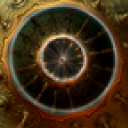How to judge wave heights when it gets big


Too true Yorkes.
Scored the best day all season at one of Aussie's best waves with three out all day last year.
It's all about the right place at the right time.
Those Kirra shots look so fun


Awesome that's so cool YS,
Yes you still can score, nice one;)
Patience and timing is the key, good on you.
Especially staying right in birds eye eh.


caml wrote:Yes jamy . I have screen grabs from the whole 3 day swell but the period was only 22 at the start . The rest of the time it was less ,averaged 18 .
I'd be interested in seeing those other three screen grabs if it's not too much trouble Caml. I remember that swell vividly, seeing and experiencing it was pretty good, although I did not hit the most exposed spots as my capabilities are not up there. I did have a surf with you about a month after it, I think you were on an 8'7" yellow five fin board custom made (sailboard blank ???) in Yals/Dunsborough area if I remember correctly. I did check out the 10'6" Paul just recently glassed for a young chap for the bombie you probably surfed during that swell.
The recent Peahi Challenge and that WA swell back in June appear to have had relatively similar swell size and period, Cow Bombie looked just as big as Jaws me thinks, the mainland ... not quiet.


OK thanks Caml, much appreciated RE the readings. I meant the shaper of your board was (I think) from the Yals area, anyway that's what I recall you (possibly another chap with your name, if so sorry for the mistaken identity) telling me or maybe my memory is fading on me. I was in the Margs area for the big swell, but about a month later I was in SA for a quicky, yes Gravelle.
From what I can glean the Maui Bouy is half a day travel offshore, where the Naturalist Buoy is only some 7km or 14km off shore in just 50m of water, I guess that is where the modelling software comes in to correlate the size for when it hits along the actual coast. I will check out the Oakley awards site, and try do my own comparison. Agree on the bathymetry, Volcanic Vs Limestone underlays and distance from shore to the continental shelf would surely play a part in the size, along with potential for focusing in the immediate area of the break.


caml wrote:Ben why would you say im estimating the period ? Seeing the arrow is dead centre between 20 - 24 , theres no estimate really it means 22 . Thats more like just reading what it says .will get the correct graph see ↓ below
Yeah it is probably bang on 22 seconds, at the time I was also referencing the CdC buoy graph which is harder to discern. Wasn't a big deal though.


caml wrote:Ben this one , the truncating spectral data at 11 sec sounds like a scientific way to explain something in terms the average reader & myself cant grasp
Mate, that's a fair and valid point.
I was simply talking about how they're presenting the swell data. See below - this is a recent 'spectral density' plot from NOAA's 51101 buoy. Spectral density is essentially how the buoy records the entire wave field at a single point in time (i.e. all swell trains, from many directions, each with different heights and periods).
As you can see the highest energy is concentrated at 10 seconds, with very little groundswell above that (to the left of the peak). This shows that most of the energy in the water in Hawaii is windswell (which correlates with the small surf reports from there this morning).

The WA buoys also record spectral density, but then they split the data into 'groundswell' and 'windswell', with the midway point being about 11 seconds.
There's nothing wrong with doing this, but as a forecaster I prefer to look at the same data from buoy to buoy - and there are more conventional data fields I would prefer to see (Hsig, Hmax, Tp, Tsig and/or Tz).
However the WA buoys further complicate things by graphing "Mean Swell Period" in three different forms: "Total", "Swell" and "Sea". So it's impossible to know how each swell is performing against expectations because our models don't forecast these parameters.


caml wrote:Also tz , tsig etc all could be translated into simpler terms .thank you for understanding
The main ones are:
Hmax = Maximum Wave Height = The largest wave recorded by the buoy within a sample period (usually 26 mins).
Hsig = Significant Wave Height = The average height of the highest 1/3 of all recorded waves within a sample period.
Tp = Peak Wave Period = The highest swell period recorded within a sample period.
Tsig = Significant Wave Period = The average period of the highest 1/3 of all recorded waves within a sample period.
Tz = Zero Crossing, or Mean Period = The average of all recorded waves within a sample period.


What I mean is that 11 seconds is where they split the spectral data. Anything with a period (or frequency) higher than 11 seconds is classified as "swell waves", whereas anything less than 11 seconds is classified as "sea waves".
And that's what they plot here:

So the red line in the top graph is the height of the "swell waves" (i.e. any swells with periods higher than 11 seconds), whilst the green line is the height of the "sea waves" (i.e. any swells with periods lower than 11 seconds).
If you correlate the green line against the wind readings from Cape Naturaliste, you'll see a natural fit - when winds get gusty from any direction except the SS/E thru' E/NE - the 'sea waves' will increase because of all of the short period windswell being generated by the local winds.


Yep Caml that was me, it was good earlier in the offshore while you were trying to crack a few at spoggies. That was my second surf at caves that day as I needed the extra salt water fix to get me across the paddock.
I never did check Yals during the big swell, I surfed further south. I just thought your board that you were riding at caves that day was shaped in Yals or there abouts.
Hey Ben, how is it that the swell for the last day on the Naturaliste Buoy is showing a ten second period, should that not be classified as sea given the spectral data split you refer to ?


Cool, now we're back to where I originally started. Yes you really only need to look at the red line on both graphs.
caml wrote:So how does the peak period get dragged down to a much lesser amount on the graph ?
That's because it's not a different period value - you can see at the bottom of the graph that it say "Mean Wave Period".
Peak Period (Tp) is the period value associated with the peak spectral energy (i.e. the most energetic swell in the water).
Mean Period (Tz) is the average swell period of all swells in the water - however the WA buoys confuse things further, as they have split this into "Swell", "Sea" and "Total".
So, I can only deduce that "Swell" (red line) is the average period of all swells above 11 seconds, and "Sea" (green line) is the average of all swells below 11 seconds, and "Total" (yellow line) is the average of ALL swells.
Therefore the reason the "Swell" period in the graph above never goes above 16 seconds - even when there's a 20 second swell in the water - is because it's averaging all of the swells above 11 seconds (or wherever the cut-off point is). And it's rare for there to be a solitary, pure groundswell of 20 seconds in the water at a single point in time - due to WA's enormous swell window, there's always residual energy from somewhere else or sometimes another secondary groundswell.


Jamyardy wrote:Hey Ben, how is it that the swell for the last day on the Naturaliste Buoy is showing a ten second period, should that not be classified as sea given the spectral data split you refer to ?
Good point. I don't actually know where they are splitting the data but other marine agencies have quoted 11 seconds as the divider between sea/swell waves so I figured that'd be the case.
But this only highlights the problems in presenting the data this way. I mostly prefer the BOM's charts for CdC and Sorell, as they're very easy to understand and interpret. They are non-directional though.


Understood, thanks Ben.


I've been doing that for years too Cam - it's one of my many unpublished tricks (tried to work out a way to get the calculations on the site, but it's very hard to process automatically).
It'd be much easier though if the WA buoys graphed peak periods - it's a much quicker, more efficient way of looking at data rather than screengrabbing their website every 30 mins (or trying to remember what it was).


One of the other tricks we have is estimating windswell percentage using proxy data from nearby weather stations. So, for the CdC buoy we can look at the buoy trace and map it against average wind speed from Neptune Island (also Cape Borda) - this gives a useful gauge on how much true "groundswell" is contained within the buoy data.
Cape Sorell has a weather station with the same name, Pt Nepean tracks well against South Channel Island, and Cape Naturaliste buoy and weather station map well too.


Camel /Ben .
As you guys have discussed and it seems come to a mutual understanding . I think the most important thing for these observations is familiarity for patterns , local nuances and how that correlates to what you observe at the waters edge . And if I had of had time I would of commented and perhaps shortened the time it took for you both to understand each other's point .:)
Cam , I didn't say that your method ( of which I started using when I was west and to a lesser extent when I originally started started travelling into SA prior to that ) . I think at some stage Ben , Craig , someone else and myself discussed this in another thread a few years back .
My main point was that in the SE region using 3 different buoys , often 2of them are contaminated by local winds , the actual swell creating winds or the fact that one is located much further south than the other two .
The other thing I tried to write is that the refraction that often is involved due to both bathymetry and tide flows will Filter such contamination out even if all three locales are experiencing similar winds . This uniqueness adds to making the surf coast a rarity and unusually consistent Region especially in regards to surface conditions but mainly clean straight " ground swells " . Even if too often small .


Please get yourself a computer camel I would love to see that


I know this is somewhat contraire to the thread title, but what's with so many people saying ADS won the World Title at "2ft Pipe"? It's all over social media plus the comments sections of many websites.
Is this to somehow lessen to merits of his achievement?
I certainly wish the World Title could have been decided in yesterday's primo conditions. But today was a lot bigger than 2ft, no matter what your scale is. Just goes to show how erractic everyone's size calls are, no matter if it's 2ft or 25ft.


I've stayed away from said comments sections so haven't seen exactly what was said, but do you think they would have said the same thing if Mick got through?
Adriano's surfing is better suited to powerful waves now anyway. He's not the chop hop wonder kid who won the junior title anymore.
Love seeing him on solid days at Bells and JBay. Don't care what some people say, I reckon he has great style.

Knowing how to call wave size correctly once the waves are bigger than you are familiar with . Theres no way of finding out without experience because photos & film make it look so much smaller than it really was . I have been learning my whole life how to make a call on correct Hawaiian size traditional . There are famous stories of everyone thinking Hawaii was the only place to find 25ft surf ( pre todos & mavs ) then they found out for real . Growing up in Margaret river the general call on a big day surf was 12ft and it was cool too say that but it was wrong . But I didn't know it at the time . Its really a negative car park surfer or something like this that started it . By learning the buoy & surfing the reefs off Margarets I started to work out formulas for the waves & reefs . Something about this , For example . 3m@14 = 10ft sets , 3m @18 would produce 15ft sets ,
4m @ 18 will give 20ft sets .
5m @18 25ft,
6m @18 - 30ft . .
But in hawaii the waters deeper & the reefs focus swell better than margarets . Wave size will be bigger due to the bathymetry . Not to mention todos,mavs,cortes,nazare,dungeons ,& more breaks where the bathymetry is more favorable than Margarets for xxl waves . This discussion was inspired by my desire to teach craig ( my friend) & others how big the jaws comp was & because I see it regularly by the swellnet forecasts undercalling xxl swells & friends who look at pictures of big waves & underestimate the size . So the swell at jaws : wasnt it 5m plus @17 ,17@17 etc ? Immediately that means about 25ft without even adjusting my scale from margs to Hawaii due to bathymetry ! All these swells around the world on average are 4-5-6 m with 16-22 sec periods that produce easily 25ft surf .